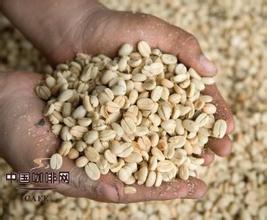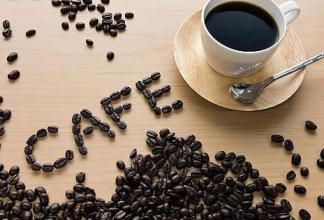Introduction to the correct method of pressing powder in the video course of coffee cloth powder
Introduction to the correct method of pressing powder in the video course of coffee cloth powder
1 the type of cutter head, flat knife grinding is more uniform than cone knife grinding, although the cone knife is not uniform, but in general, its non-uniformity is also stable within a standard, that is to say, the powder seen only once may be slightly uneven, but the uneven degree of each grinding is still at the same level. in recent years, it is considered that low calorific value, coupled with uneven grinding can sometimes bring more rich flavor. Conical knives are used more and more in the competition!
The amount of beans in the soybean warehouse should not be small, and too few beans will make the grinding uneven.
3 the knife head has not been cleaned for a long time, or it is damp, just clean it.
4 the cutter head is damaged, change the cutter head.
How to judge whether it has achieved the effect of uniform distribution of powder? In addition to carefully performing the action of the cloth powder and careful observation, the production process can also provide some clues to determine whether the cloth powder affects the quality of the extraction and Espresso.
In general, the extraction time should be controlled at about 25 to 30 seconds, but sometimes it will be found that the outflow state of coffee will soon become unstable, a large jump, and the color will soon become very light. At this time, we can judge: there is a problem inside the pressed powder (there is a crack) or the less part of the coffee powder is overextracted due to the uneven pressing powder (and this may also be caused by the uneven distribution of the coffee powder) or it is the uneven distribution of the powder. so that the edge is not covered with coffee powder, causing water to flow directly through there. After the extraction is completed, take off the handle and observe the shape of the pressed powder. If there is no coffee powder on the edge, or the coffee powder is soaked, it is because of the uneven cloth powder that leads to the extraction failure. Then the next adjustment will start with the cloth powder.
The use of finger push is more suitable for double-head handles (that is, handles that can make two cups of Espresso at the same time) rather than single-head handles. Because the bottom of the double-headed powder bowl is a flat surface, it requires that the coffee powder should be evenly distributed so that each part of the coffee powder has the same thickness, which is convenient for the control of the pressing power and the overall uniformity. While the bottom of the single-headed powder bowl is not a plane, it is generally a two-step structure from the outer edge of the powder bowl to the center. This makes the central part of the coffee powder thicker than the edge part after the coffee powder finishes forming a plane on the surface, so that although the central part and the edge part are subjected to the same pressure, the compactness is not the same, which has a great impact on the future extraction. Therefore, at this time, it is required that after the coffee powder is evenly distributed, the surface should be slightly concave in the middle (so that the overall thickness of the coffee powder can be kept consistent), and then pressing the powder is easier to achieve a uniform and compact effect. Therefore, it is not suitable to pass by fingers, but it is more suitable to scrape off part of the coffee powder from the middle of the powder bowl to form a concave shape with the lid edge of the powder cartridge.

Important Notice :
前街咖啡 FrontStreet Coffee has moved to new addredd:
FrontStreet Coffee Address: 315,Donghua East Road,GuangZhou
Tel:020 38364473
- Prev

When making coffee by dripping filter, you need to fold the filter paper into
When brewing coffee by drip filtration, the ideal brewing water temperature for folding filter paper into most coffee is between 90C and 95C. The best brewing water temperature will be different with different varieties and roasting degree of coffee beans, but basically within this range. If the water temperature is low and the coffee is not extracted enough, it will be sour. If the water temperature is too high and the coffee is extracted too much, the coffee will be bitter. I know this.
- Next

Analyze the common taste of coffee-- astringent taste of all kinds of coffee
Analysis of the common taste of coffee astringent taste of all kinds of coffee first: what is astringent taste? Is it a smell? Or is it like sour, bitter, sweet and salty that can be perceived by the sense of taste? Second: how does the astringency of coffee come into being? Third: what is the way to reduce or avoid astringency? With these myths, I looked up some information, although the question was not completely solved.
Related
- What brand of black coffee is the most authentic and delicious? what are the characteristics of the flavor of the authentic Rose Summer Black Coffee?
- Introduction to the principle and characteristics of the correct use of mocha pot A detailed course of mocha pot brewing coffee is described in five steps.
- Which is better, decaf or regular coffee? how is decaf made?
- How much is a bag of four cat coffee?
- How about four Cat Coffee or Nestle Coffee? why is it a cheap scam?
- Which is better, Yunnan four Cats Coffee or Nestle Coffee? How about cat coffee? is it a fake scam? why is it so cheap?
- How about Cat Coffee? what grade is a hoax? which instant coffee tastes better, four Cat Coffee, Nestle Coffee or G7 coffee?
- Process flow chart of coffee making-Starbucks coffee making process what coffee tastes good at Starbucks
- The top ten best coffee beans in the world Rose summer coffee or Tanzanian coffee tastes good
- Yunnan four cat coffee is good to drink?_four cat coffee is a big brand? four cat blue mountain coffee is fake?

